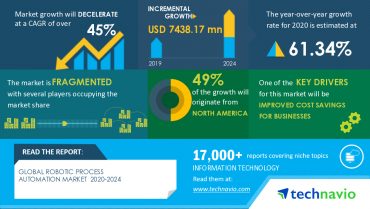
Many AI projects never make it beyond small-scale trials due to a lack of skills, technical obstacles, and organizational issues. Here’s how to remove these sources of friction .
For all the great expectations about the ways artificial intelligence will change business, study after study finds that organizations have a hard time realizing its full benefits. While many projects are undertaken, few make it to production, and many of those that do fail to deliver the anticipated results.
The culprit is friction. Many assume that friction arises from encountering technical issues. And while that is certainly the case in most instances, additional sources of friction prevent AI projects from coming to fruition and delivering on their promise. Specifically, most organizations must also overcome people and organizational issues. Some recent studies help frame the scope of the problem and put the issue of friction into perspective.
One MIT Sloan Management Review study found that 40% of organizations making significant investments in AI do not report business gains from those efforts. And seven out of 10 companies surveyed report minimal or no impact from AI. Those numbers are truly unfortunate because 9 out of 10 respondents said that AI represents a business opportunity for their company.

A newly released study by McKinsey perhaps showed the consequences of these issues. The study found that the adoption of AI has stagnated over the last few years. Since the surge in artificial intelligence adoption in 2017, rising from 20 percent of organizations implementing AI in at least one business area to 58 percent in 2019, growth has been middling. In 2022, only 50 percent of respondents said they were implementing AI, lower than the 2019 figure.
And not only were fewer companies implementing AI, those that were, on average, were shrinking their efforts. According to the study, the average number of AI capabilities per organization also stalled in 2022, after three years of strong growth from 1.9 per organization in 2018 to 3.9 in 2021. In 2022, this figure declined to 3.8 capabilities per organization, which may be expected due to the economic downturn, lowering the investment in new AI services.
See also: Enabling Transformation Change With HPC, Simulation, AI, and Data Analytics
Addressing the sources of AI friction
The role of data and analytics is greatly expanding in most companies. However, analytics, data-driven decisions, AI, and more are no longer the sole domain of data scientists. Now lines of business and even non-technical individuals are driving their use.
Several issues prevent them from succeeding in their data, analytics, and AI projects. How severe is the problem? Less than one percent of models have their desired impact, according to Altair Rapidminer. The culprit is friction, which can lead to failed projects, wasted money, and unnecessary work.
Friction emerges in three areas: Technical, organizational, and financial.
Let’s start with technical friction. AI is hard. Machine learning is hard. Building models, understanding statistics, and deploying those models on the right infrastructure are all hard. That can create some technical friction.
Organizational friction occurs due to a lack of skills or talent. As analytics and AI projects become the domain of the lines of business or individuals, there are not enough data scientists or people who understand how to build, find the models that will deliver the greatest impact, or how to deploy those models into production.
Financially, friction enters when there is a lack of ideas or buy-in. How does that impact success? Getting projects off the ground and through all the steps resulting in a production solution requires an investment in the right infrastructure. As such, those seeking to develop models or use AI must go through all the procurement processes and everything else surrounding that. All of that can cause some friction until you finally get things going and accelerate the building of AI models.
The move to frictionless analytics and AI
These challenges require careful thinking and holistic solutions that offer equal parts organizational education, technology acceleration, and all-around flexibility.
These are areas where Altair RapidMiner, the data analytics and AI platform, can help.
The Altair RapidMiner platform is a cloud-native analytics platform that accelerates data analytics projects on an enterprise scale. It can help anyone in an organization connect to data, transform it, automate it, build machine learning models with it, deploy those models in production, and build data analytics applications that the business uses every day.

Altair RapidMiner smooths out several key friction points. The platform bridges the gap between users and data at the most basic level, providing dozens of connectors for big and small data. It empowers single-person teams as much as large teams because each stage of the data analytics process can be executed step-by-step within the platform.
Additionally, it has toolsets for users of all skill levels, no matter their level of coding expertise. It supports no-code functionalities via Auto ML for novice users, code-optional functionalities via the workflow builder for intermediate users, and full-code functionalities for experts. Moreover, users can move seamlessly between these modes as needed.
With regard to financial frictions, Altair offers the Altair Units software licensing model. With Altair Units, users get full access to Altair software tools whenever they need them, and they can determine when, where, and how they want to use different tools without worrying if they’re eligible for access. This business model offers a level of flexibility no others offer. The solution handles all the friction people typically would have with procurement processes.
And one additional aspect that helps remove sources of friction is the Altair Center of Excellence (CoE) program. The CoE addresses the gap between goals and the skills needed to reach them. Organizations simply have too few data scientists, data engineers, and data analysts to accomplish every project an organization wants to implement. The CoE addresses this by training business line personnel to tackle data analytics problems themselves. Organizations don’t have to hire dozens more data scientists and engineers. Instead, the people who experience problems can solve them on their own. It also means the data scientists and data engineers already in place can focus on the toughest challenges, above and beyond the basics. It brings out the best in everyone.
A final word
At a time when organizations need to become data-driven, few are able to achieve measurable benefits using sophisticated analytics and AI. Many projects never make it beyond small-scale trials due to a lack of skills, technical obstacles, and organizational issues.
Solutions like Altair RapidMiner aim to minimize or eliminate the issue across these domains. The end result is frictionless AI.







